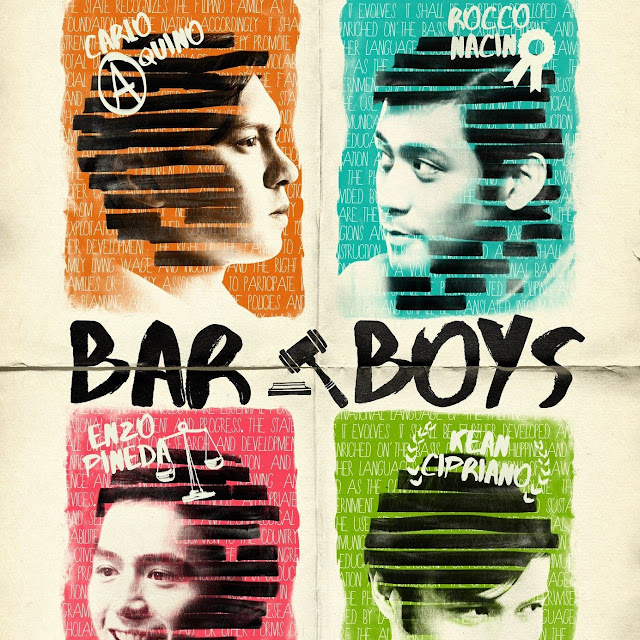Dambana ng Gunita, Panata sa Paglaya
On the 47th Martial Law anniversary, the University of the Philippines had a weeklong activities to “commemorate and honor the memory of the University’s best and brightest who struggled against dictatorship and despotism”. I was able to attend two events: a film screening of Liway and a forum on Media, Martial Law, and Human Rights in Cine Adarna. Both opened my eyes to the political climate of that historical period in our country. The former uses the audio-visual medium to expose and enlighten people about the subject, while the latter utilizes verbal interaction to illuminate audiences. Such programs do not only help the community to remember but also prevent the mistakes of the past transpiring again.
Film, as one of the prominent media, is able to deliver an experience that transcends other forms as it does not only display moving and sound pictures. For one, Liway carries a strong narrative about the grimes and terror inflicted during the Marcos regime and his martial law. The story revolves around the life of the rebel prisoners primarily Dakip, a kid whose parents, Day and Ric, were dissidents. Day, who was also known as Commander Liway, struggles in the situation with her husband as they try to save Dakip from the horrifying reality and history of their lives. They knew that Dakip has to know and eventually learn the truth for he is a child who aspires and should live in a bigger world – world outside the fences. The film ends in the emancipation of the rebel prisoners as the people power had won. Essentially, Liway as a work of art succeeds in reproducing a relevant picture of the times with regard to family, government, and history.
On the other hand, the forum on Media, Martial Law, and Human Rights has exposed me to the past through the narrative of Ceres P. Doyo, a journalist, and Boni P. Ilagan, an artist and writer. They tackled the significance of media in revealing the atrocities in the country particularly human rights violations during the martial law. Disclosing and drawing from personal experiences, they are able to relate and situate the current times with that of the past which reflects the societal conditions we are facing over time. Moreover, the forum managed to improve my understanding on the political implications of harnessing media for certain interests.
Ultimately, as history encompasses culture and tradition, it also embraces transformations of society with regard to technological innovation in media – from print to digital, which perpetuates the notion that it holds and manifest certain ideologies of both the state and the people. Cinema was used as propaganda by the Marcos government; journalism has been repressed from then until to the present regime; media revolutionized the capacity of not only the ruling class but also the people power. Despite such unpleasant histories, media – be it for art or tool for communication – continually reflects the frameworks of its mechanism, development, and impact!
--
Comm 130
Professor Maria Diosa Labiste, PhD
27 September 2019
Reaction Paper
Film, as one of the prominent media, is able to deliver an experience that transcends other forms as it does not only display moving and sound pictures. For one, Liway carries a strong narrative about the grimes and terror inflicted during the Marcos regime and his martial law. The story revolves around the life of the rebel prisoners primarily Dakip, a kid whose parents, Day and Ric, were dissidents. Day, who was also known as Commander Liway, struggles in the situation with her husband as they try to save Dakip from the horrifying reality and history of their lives. They knew that Dakip has to know and eventually learn the truth for he is a child who aspires and should live in a bigger world – world outside the fences. The film ends in the emancipation of the rebel prisoners as the people power had won. Essentially, Liway as a work of art succeeds in reproducing a relevant picture of the times with regard to family, government, and history.
On the other hand, the forum on Media, Martial Law, and Human Rights has exposed me to the past through the narrative of Ceres P. Doyo, a journalist, and Boni P. Ilagan, an artist and writer. They tackled the significance of media in revealing the atrocities in the country particularly human rights violations during the martial law. Disclosing and drawing from personal experiences, they are able to relate and situate the current times with that of the past which reflects the societal conditions we are facing over time. Moreover, the forum managed to improve my understanding on the political implications of harnessing media for certain interests.
Ultimately, as history encompasses culture and tradition, it also embraces transformations of society with regard to technological innovation in media – from print to digital, which perpetuates the notion that it holds and manifest certain ideologies of both the state and the people. Cinema was used as propaganda by the Marcos government; journalism has been repressed from then until to the present regime; media revolutionized the capacity of not only the ruling class but also the people power. Despite such unpleasant histories, media – be it for art or tool for communication – continually reflects the frameworks of its mechanism, development, and impact!
--
Comm 130
Professor Maria Diosa Labiste, PhD
27 September 2019
Reaction Paper









Comments
Post a Comment